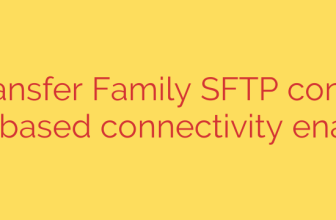
Beyond Data Silos: The Power of Cloud-Powered Unified Storage for Modern Enterprises
In today’s fast-paced digital landscape, data is the lifeblood of any successful enterprise. However, managing this data has become increasingly complex. Businesses often find themselves juggling separate, isolated storage systems—one for file data, another for block data, and yet another for object storage. This fragmented approach, known as data siloing, creates inefficiency, drives up costs, and hinders the performance of critical applications.
The solution lies in a modern, streamlined approach: cloud-powered unified storage. This innovative architecture consolidates file, block, and object data into a single, centrally managed platform that seamlessly integrates with the cloud, providing the flexibility and scalability modern enterprises demand.
The Challenge of Traditional Storage Architectures
For decades, enterprise applications have relied on distinct storage protocols for different needs.
- File Storage (NAS): Used for shared documents, user files, and collaborative content.
- Block Storage (SAN): The backbone for structured data, powering databases and high-performance applications like ERP and CRM systems.
- Object Storage: The go-to for unstructured data like backups, archives, media files, and cloud-native application data.
Maintaining these separate systems is a significant operational burden. It requires specialized IT teams, expensive hardware, and complex management tools. This complexity not only increases the Total Cost of Ownership (TCO) but also creates bottlenecks that slow down innovation and business agility.
What is Cloud-Powered Unified Storage?
Cloud-powered unified storage is a paradigm shift in data management. It provides a single, intelligent platform that can serve all three data types—file, block, and object—from a consolidated pool of resources. This approach eliminates the need for separate, specialized storage systems, simplifying operations and reducing infrastructure sprawl.
The “cloud-powered” element is the game-changer. By integrating natively with public cloud providers like AWS, Azure, and Google Cloud, these solutions offer unparalleled flexibility. Enterprises can run applications on-premises, in the cloud, or in a hybrid model without re-architecting their data infrastructure.
Key Benefits of a Unified Cloud Storage Strategy
Adopting a unified storage solution offers transformative advantages that directly impact business performance and efficiency.
1. Radically Simplified Data Management
By consolidating storage into one platform, IT teams can manage all their data through a single interface. This dramatically reduces administrative overhead, freeing up valuable resources to focus on strategic initiatives instead of routine maintenance. Provisioning, monitoring, and data protection become streamlined and consistent across all workloads.
2. Significant Reduction in Total Cost of Ownership (TCO)
Unified storage lowers costs in several ways. It minimizes the need for expensive, single-purpose hardware and reduces the physical footprint of the data center, leading to lower power and cooling expenses. Furthermore, intelligent data tiering automatically moves less frequently accessed data to lower-cost cloud storage, optimizing spending without sacrificing accessibility.
3. Unmatched Scalability and Performance
Modern enterprise applications demand high performance and the ability to scale on demand. Cloud-powered unified storage is designed for this reality. It can scale capacity and performance independently and non-disruptively, ensuring that critical applications like databases and analytics platforms always have the resources they need.
4. Enhanced Data Mobility and Hybrid Cloud Flexibility
In a multi-cloud world, data needs to be mobile. A unified platform makes it easy to move data between on-premises infrastructure and public clouds. This enables powerful use cases like cloud-based disaster recovery, data bursting for analytics, and seamless application migration, giving your organization the freedom to choose the best environment for each workload.
5. Fortified Security and Compliance
Centralizing data management enhances security. A unified system allows for consistent application of security policies, encryption, and access controls across all data types. Leading solutions offer robust, built-in features like ransomware protection with immutable snapshots, helping to safeguard your most valuable asset—your data—from evolving threats and ensuring you meet strict compliance mandates.
Actionable Security Tips for Your Unified Storage Environment
While unified storage strengthens security, a proactive stance is essential. Follow these best practices to protect your data:
- Implement a Zero Trust Model: Assume no user or device is inherently trustworthy. Enforce strict identity verification and role-based access control (RBAC) for every request to access data, regardless of where it originates.
- Ensure End-to-End Encryption: Your data must be encrypted both at-rest (on disk) and in-transit (as it moves across the network and to the cloud). This provides a critical layer of defense against unauthorized access.
- Automate Auditing and Reporting: Regularly audit access logs and system configurations to detect suspicious activity. Use automated tools to generate compliance reports for regulations like GDPR, HIPAA, and SOX, simplifying the audit process.
- Develop a Robust Immutable Backup Strategy: Leverage immutable snapshots, which cannot be altered or deleted, as your primary defense against ransomware. Regularly test your backup and recovery procedures to ensure business continuity.
The Future-Proof Foundation for Enterprise Data
As businesses continue to digitally transform, the limitations of traditional storage silos become more apparent. Cloud-powered unified storage offers a clear path forward—a flexible, scalable, and cost-effective foundation for all your enterprise applications. By breaking down data silos and embracing the power of the hybrid cloud, organizations can unlock new levels of agility, drive innovation, and build a truly future-proof data strategy.
Source: https://cloud.google.com/blog/products/storage-data-transfer/announcing-enhancements-to-google-cloud-netapp-volumes/








